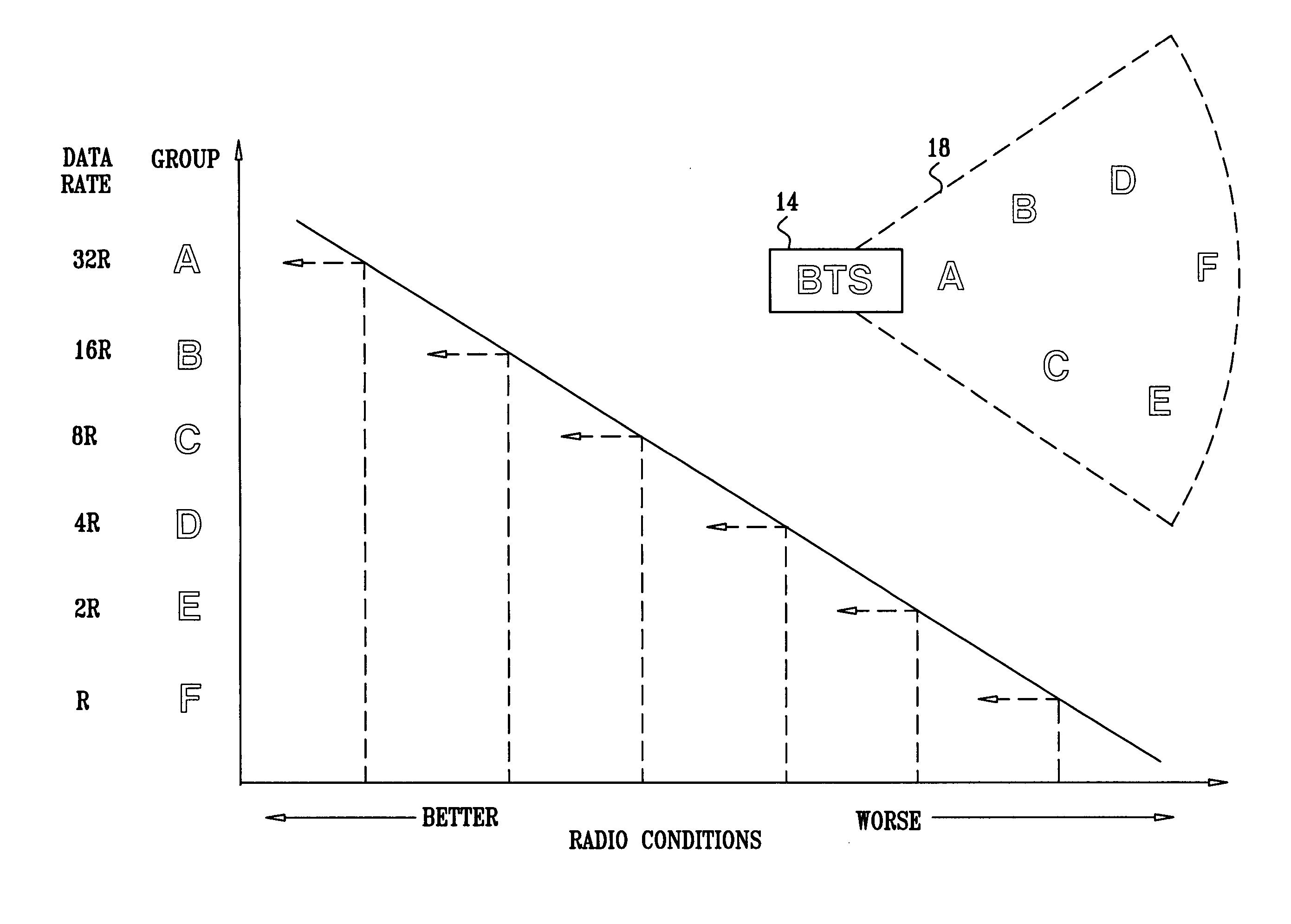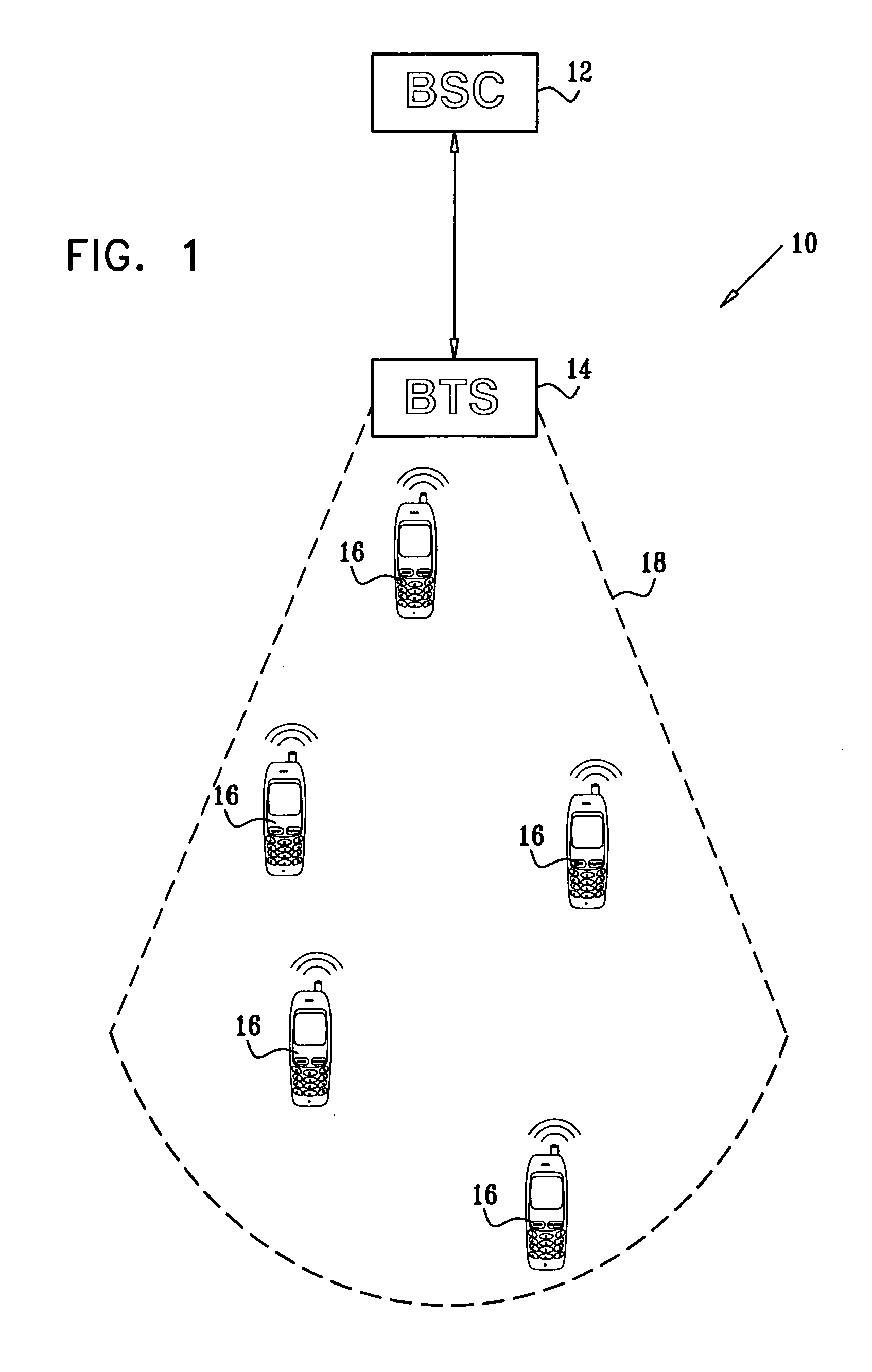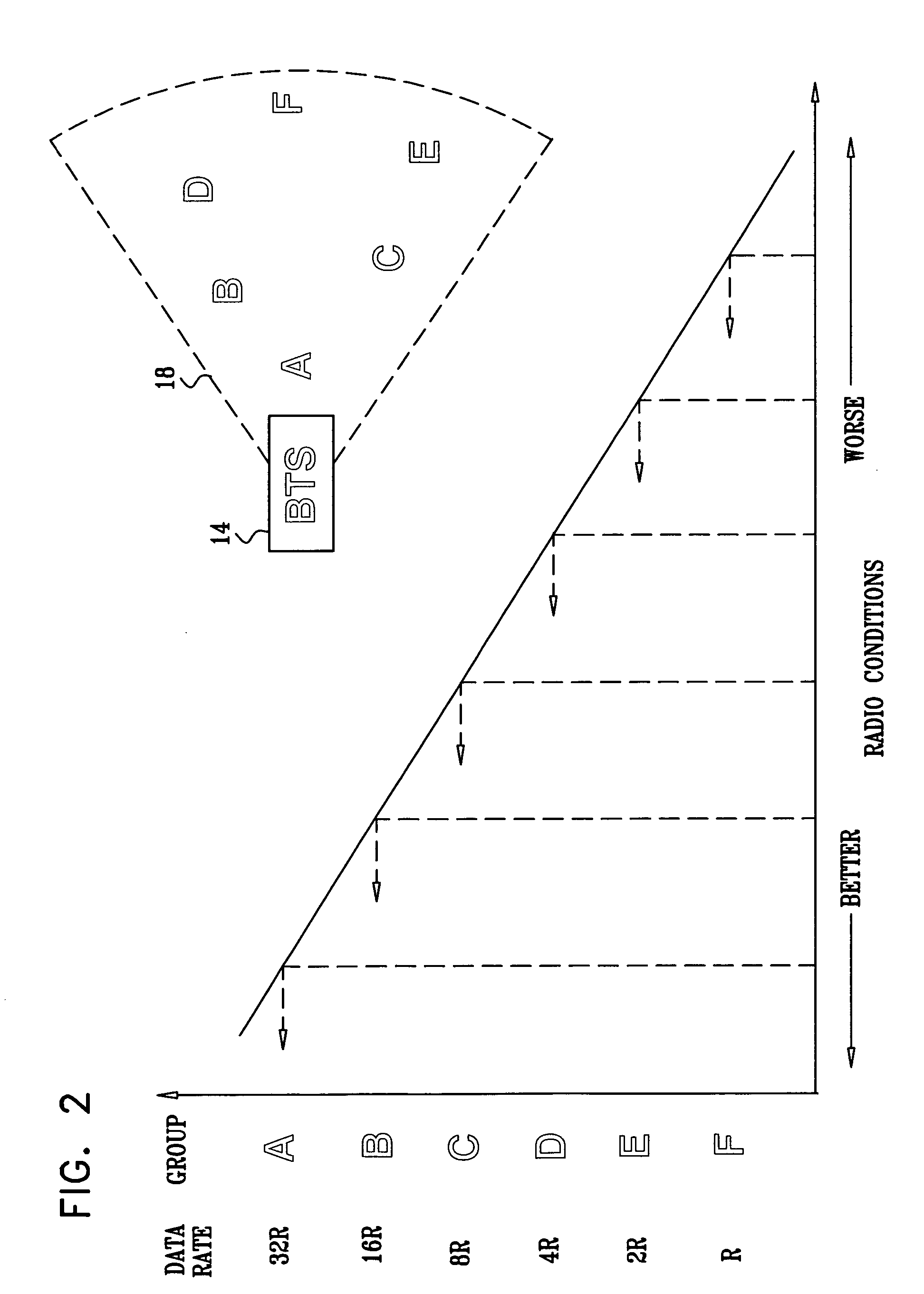Channel scheduling
a channel scheduling and channel technology, applied in the field of cellular telephone communications, can solve the problems of difficult allocation of resources within the limited bandwidth available, and achieve the effect of fair distribution of data throughput rates
- Summary
- Abstract
- Description
- Claims
- Application Information
AI Technical Summary
Benefits of technology
Problems solved by technology
Method used
Image
Examples
Embodiment Construction
[0025] Reference is now made to FIG. 1, which is a schematic illustration of a network system 10, according to an embodiment of the present invention. System 10 operates according to a code division multiple access (CDMA) protocol, typically an industry-standard CDMA protocol such as a CDMA2000 protocol provided by the Telecommunications Industry Association of Arlington, Va. System 10 typically comprises a cellular communication network. It will be appreciated, however, that system 10 may comprise other types of communication network operating according to a CDMA protocol. Such types include, but are not limited to, wireless networks comprising mobile transceivers and / or networks comprising transceivers physically coupled, by communication cables such as conductive cable and / or optical fibres, to a central radio transmitter of the network. Hereinbelow, by way of example, system 10 is assumed to comprise a wireless cellular network comprising mobile transceivers.
[0026] A base stati...
PUM
 Login to View More
Login to View More Abstract
Description
Claims
Application Information
 Login to View More
Login to View More - R&D
- Intellectual Property
- Life Sciences
- Materials
- Tech Scout
- Unparalleled Data Quality
- Higher Quality Content
- 60% Fewer Hallucinations
Browse by: Latest US Patents, China's latest patents, Technical Efficacy Thesaurus, Application Domain, Technology Topic, Popular Technical Reports.
© 2025 PatSnap. All rights reserved.Legal|Privacy policy|Modern Slavery Act Transparency Statement|Sitemap|About US| Contact US: help@patsnap.com



